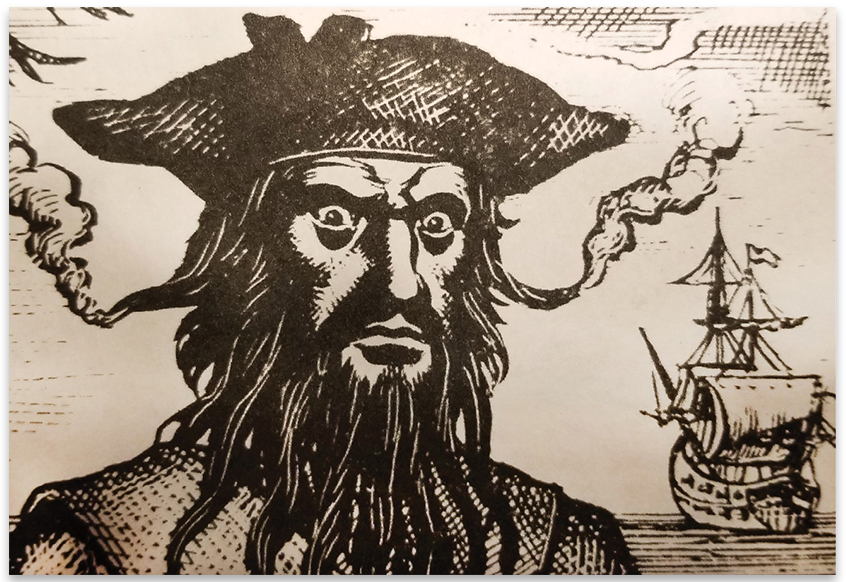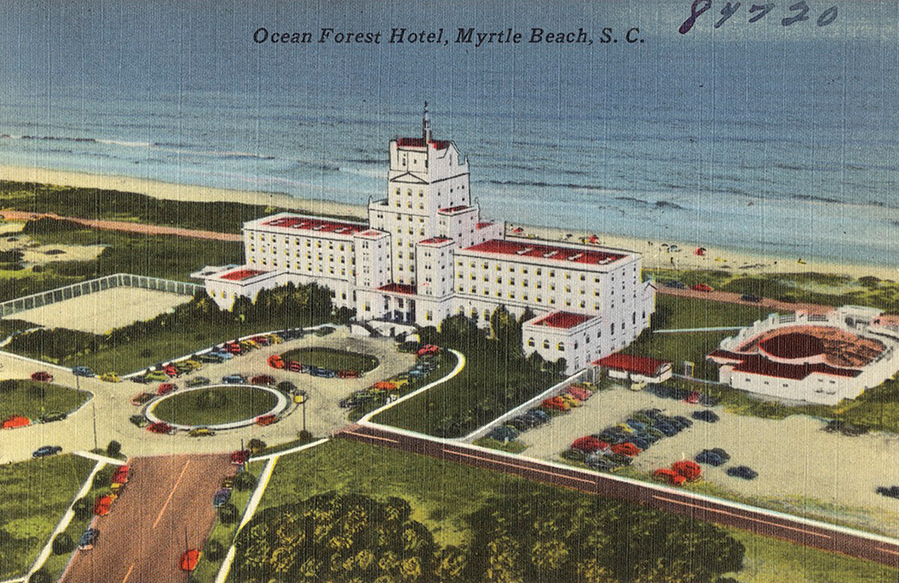A look back at the rocky history of the Grand Strand

For thousands of years, Native Americans lived peacefully in the area we know as Horry County and the Grand Strand. Small tribes dotted the landscape from Longs to Winyah Bay, South Carolina, with the largest being the Waccamaw Indian People. It is estimated that their population was about 900 in the early 1600s. They sustained on farming and hunting, which would serve them well for trading with the new faces who would appear on their shorelines.
One of the first recorded explorers to visit and take up residency on the Grand Strand was a Spanish explorer named Lucas Vazquez de Ayllon. According to the South Carolina Encyclopedia, he was a well-educated man who had advanced degrees in law and was politically connected in Spain. In 1521, he hired two captains of questionable reputation to explore the Bahamas and lands beyond on a slaving expedition. They landed near Winyah Bay, S.C., where they kidnapped about 60 Native Americans and took them back to Hispaniola. They told Ayllon that the land would be easy to conquer with no resistance. The locals were eager to make friendships and trade goods, not fight.

In 1523, Ayllon got permission to establish a settlement and conduct trade with the natives while holding the title of “Governor for Life.” He set sail in 1526 with a fleet of six ships, about 600 passengers, livestock, and supplies. In what would be the first recorded settlement in the United States, the colony lasted only a few months before being devastated by hunger, disease, and slave uprisings. Only about 150 of the original 600 settlers would return to Hispaniola.
The 1600s produced a rapid increase in English settlers up and down the East Coast. Early explorers approaching from the sea would find beautiful beaches, but sandy soil that was not suitable to sustain farming. It wasn’t until they ventured further inland were they able to see the majestic timber and fertile farmland.
In 1650, King Charles ordered colonial governors to link the American colonies together from Charleston, South Carolina, to Boston, Massachusetts. A 1,300-mile stretch of wagon trail was completed in 1735 and named Kings Highway. Portions of the trail are still identifiable by the deep wheel ruts in various locations around Horry County.
The 1700s were a time of growing industry and prosperity. Rice and indigo plantations were thriving, as well as timber. European settlers also had a huge demand for animal pelts back home, especially beaver. The increase in commerce and trading also created some detrimental issues both on land and sea.

On land, “Hostilities were flaring between unscrupulous traders and Native Americans over trading abuses and enslavement” says Cheryl Sievers, 2nd Chief Judicial of the Waccamaw Indian People.
On the sea, the large-scale trading that was being done was mostly delivered back home by boat. This made the waters around the Grand Strand a haven for cutthroat pirates, such as the infamous Edward Teach, a.k.a. Blackbeard, who ravaged and pillaged the area until his capture in 1718. An English/Native American trading post was established in Hobcaw Barony about this time to supplement a trading post established in Little River.
In 1735, Governor Johnson created Kingston Township located along the Waccamaw River to better organize the interior part of the sprawling colony. English and Scottish settlers found that they were too far inland for tidewater rice and the land was not suitable for large-scale cotton production. They settled for being small, independent farmers, who relied on the land and each other with little use for the outside world. Thus, the name “Independent Republic of Horry County” was born. “Kings Town” was the predominant town in this interior area before changing the name to “Kingston”, then ultimately “Conway Borough” in honor of local hero General Robert Conway, as recorded by the South Carolina Encyclopedia.
By the 1800s, the Northern and Western parts of the county were gaining in population, as the small farms prospered in the gentle Southern climate. In 1801, the area known as Kingston County was renamed Horry County in honor of Revolutionary War hero Peter Horry, who served under Brigadier General Francis Marion. Its courthouse was established in what was then Kingston, but is now Conway. History shows that rice plantations and production were also flourishing in the Lowcountry.
Around this same time, a young man was leaving North Carolina to find work in the mercantile and turpentine business in Conway. His journey would shape the future of the Grand Strand for generations to come, according to the South Carolina Encyclopedia. Franklin G. Burroughs was a self-made man, who went on to be a successful merchant, land developer, soldier, and visionary. His dream of a coastal beach resort attracting visitors from afar would eventually be realized by his heirs, who would complete the work he had already set in motion.

“Horry County and the City of Myrtle Beach have a long history of hard-working families who helped build the Grand Strand into the thriving destination it has become,” says Victor Shamah, longtime local businessman.
The late 1800s were a time of rapid development and growth due to the construction of the railroad. Timber was now easily shipped and towns like Loris grew steadily. Horry County and the Grand Strand were now linked to the outside world. Tourism was beginning to happen about the same time that the county embraced its emerging crop: tobacco. The 1860 census showed that Horry County was the poorest county in South Carolina. By 1920, Horry was the top tobacco producing county in the state and prospering.
In 1901, the first oceanfront hotel named the “Seaside Inn” was built in the newly named town of Myrtle Beach. The City of Myrtle Beach documents that “Miss Addie” Burroughs had the honor of renaming the town formerly known as “New Town.” She chose the name for the native wax myrtle trees found around the area.
Tourism was now on a rapid increase, and textile magnate John T. Woodside purchased 65,000 acres of prime oceanfront real estate to build a high-class hotel, golf course, and country club to attract upper class clientele. He built The Ocean Forest Hotel, a magnificent 10-story structure complete with marble columns, crystal chandeliers, and ballrooms, along with the golf course. He unfortunately lost most of his money in the stock market crash of 1929 and lost the properties. Today, the golf course is now known as Pine Lakes Country Club. The hotel was demolished in 1974. Condominiums were built in its place as a sign of the future as the number of tourists continue to grow to this day.